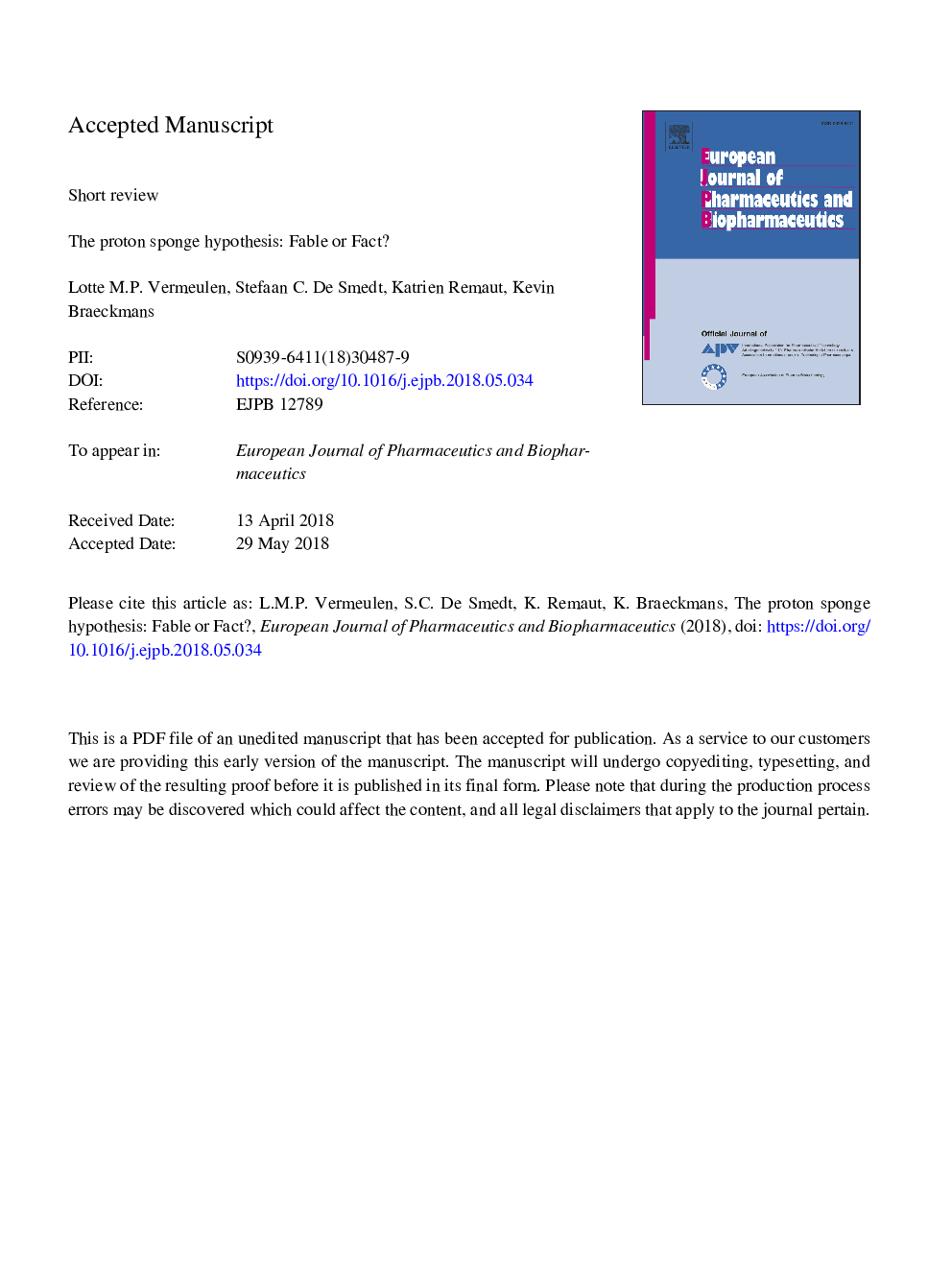| Article ID | Journal | Published Year | Pages | File Type |
|---|---|---|---|---|
| 8411772 | European Journal of Pharmaceutics and Biopharmaceutics | 2018 | 59 Pages |
Abstract
In non-viral gene therapy, cationic polymers and lipids are frequently used to encapsulate macromolecular therapeutics into nanoparticles. During their journey to deliver the cargo to the intended intracellular target, many biological barriers need to be overcome. One of the major bottlenecks for efficient transfection is the endosomal barrier since nanoparticles often remain entrapped inside endosomes and are trafficked towards the lysosomes where the cargo is degraded. For cationic polymers, the proton sponge hypothesis was introduced in the late '90s as a way to explain their endosomal escape properties. However, to date, no consensus has been reached in the scientific community about the validity of this hypothesis due to many contradictory reports. Here we review the sometimes conflicting reports that have been published on the proton sponge hypothesis. We also discuss membrane destabilization and polymer swelling as additional factors that might influence endosomal escape of polyplexes. Based on the key publications on this subject, we aim to launch a consensus on the role of the proton sponge hypothesis in endosomal escape.
Related Topics
Life Sciences
Biochemistry, Genetics and Molecular Biology
Biotechnology
Authors
Lotte M.P. Vermeulen, Stefaan C. De Smedt, Katrien Remaut, Kevin Braeckmans,
